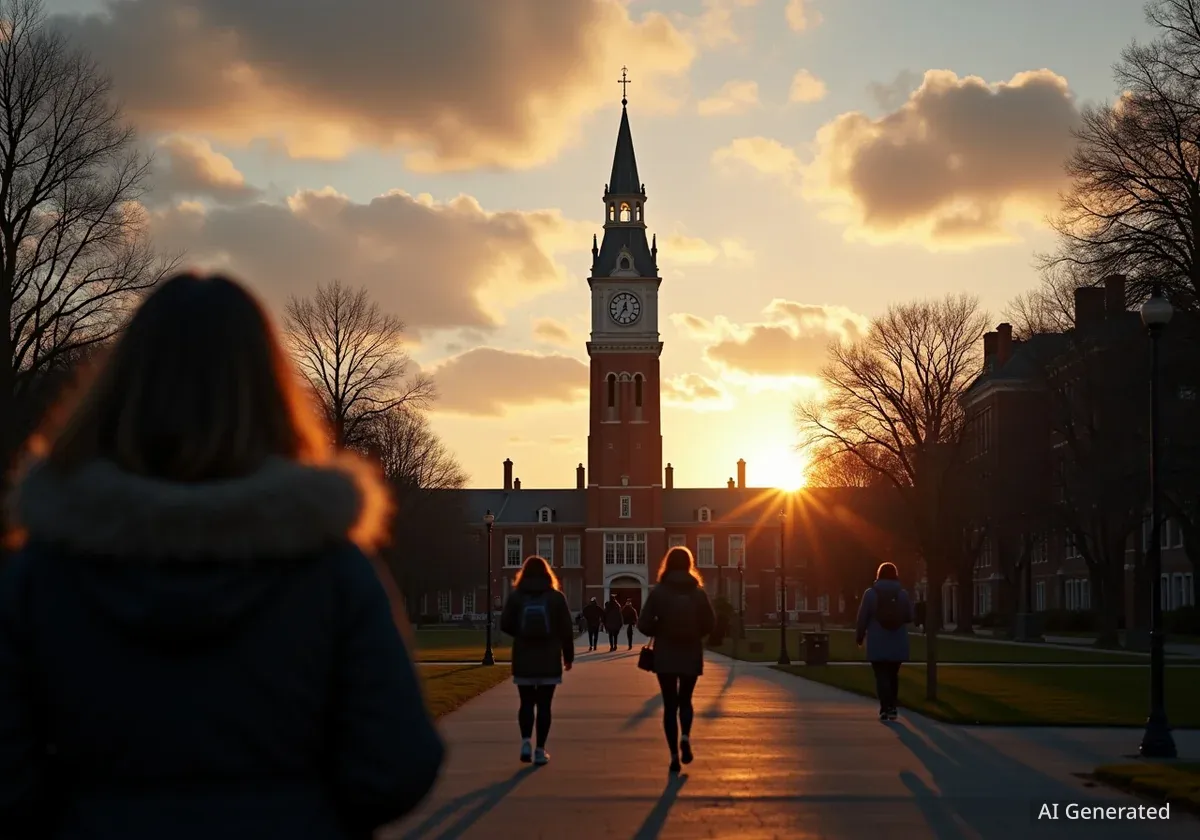The University of California, Davis, has announced a major expansion of its School of Veterinary Medicine, funded by $110.5 million in philanthropic gifts. The 10-year initiative aims to address a critical shortage of veterinarians by increasing student capacity and constructing several new state-of-the-art facilities.
Key Takeaways
- UC Davis will use $110.5 million in donations for a significant expansion of its veterinary school.
- The project will increase student enrollment by 200, from 600 to 800, to help combat a projected national shortage of 40,000 veterinarians by 2030.
- New facilities include an education pavilion, a cancer center, an equine hospital, and a primary care hospital.
- The expansion emphasizes support for first-generation and low-income students, reflecting the school's commitment to equity and access.
Addressing a National Veterinarian Shortage
The expansion is a direct response to a growing workforce crisis in veterinary medicine. According to recent studies, California is projected to face a shortfall of 2,000 veterinarians by 2030, while the national shortage could reach as high as 40,000.
To help close this gap, UC Davis plans to increase its class size by 50 students per year. This will eventually raise the total student population from 600 to 800, creating a larger pipeline of qualified professionals entering the field.
By the Numbers
- Projected CA Shortage: 2,000 veterinarians by 2030
- Projected U.S. Shortage: 40,000 veterinarians by 2030
- Student Increase: 200 additional slots (from 600 to 800 total)
- Annual Patient Capacity: Will grow from 50,000 to 70,000
Tom Hinds, the school’s director of strategic planning and communications, stated that the new facilities are essential to accommodate this growth. "These facilities will permit us to expand our class size by 50 per year to help address this need," Hinds explained.
A Decade of Development Funded by Donations
The ambitious 10-year project is made possible entirely through philanthropic contributions. A cornerstone of the funding is a $50 million challenge grant from the Wayne and Gladys Valley Foundation, which has encouraged other donors to support the initiative.
New State-of-the-Art Facilities
The investment will fund the construction and development of several new specialized centers designed to enhance teaching, research, and clinical services. The planned additions include:
- A new education pavilion
- An equine hospital
- A dedicated cancer center
- A spay-neuter clinic
- An updated raptor center
- A primary care hospital
In addition to these future projects, the school recently opened its new All Species Imaging Center, another donor-funded facility that will advance diagnostic capabilities for a wide range of animals.
"As a global leader in veterinary treatment and research, it’s our responsibility to ensure that care and compassion extend as far as possible."
Expanding Access and Creating Opportunity
A key goal of the expansion is to create more pathways into the veterinary profession for students from diverse backgrounds. UC Davis has already made significant strides in this area, with more than half of its current veterinary students being the first in their families to attend college.
The school has actively worked to remove barriers to entry by eliminating the standardized graduate exam (GRE) requirement and providing substantial financial aid. Annually, it distributes over $8 million in scholarships and grants to its students.
Commitment to Equity
UC Davis officials emphasized that supporting students from underrepresented communities is a priority. Many of these students come from agricultural areas where veterinary care is in high demand, and they are often more likely to return to serve those same communities after graduation.
"First-generation students often come from low-income communities and are more likely to return to serve those communities," said Hinds. The expansion will not only provide more student slots but also create new jobs for veterinary technicians and support staff, offering entry-level opportunities in the animal care field.
Broader Impact on Animal and Human Health
The expansion is expected to have far-reaching benefits beyond the university. By increasing its annual patient capacity from 50,000 to 70,000, the school will provide care for thousands more animals. A new shelter medicine and access-to-care facility will specifically train students to work in underserved regions and offer services to families with limited financial resources.
Dean Mark Stetter noted that the project is not about prestige, despite the school's ranking as No. 1 in the United States and No. 2 globally. Instead, the focus is on practical outcomes.
The primary goals, according to Stetter, are to prepare the next generation of veterinarians, advance the quality of animal care, and support innovations that can also benefit human health. The financial prospects for graduates are also strong, with the latest class reporting average starting salaries of $140,745.
Hinds summarized the project's broad mission: "This expansion will help us serve society even further — by producing additional veterinarians and specialists, by treating more cases and by advancing more clinical and scientific innovations that benefit animals and humans."





